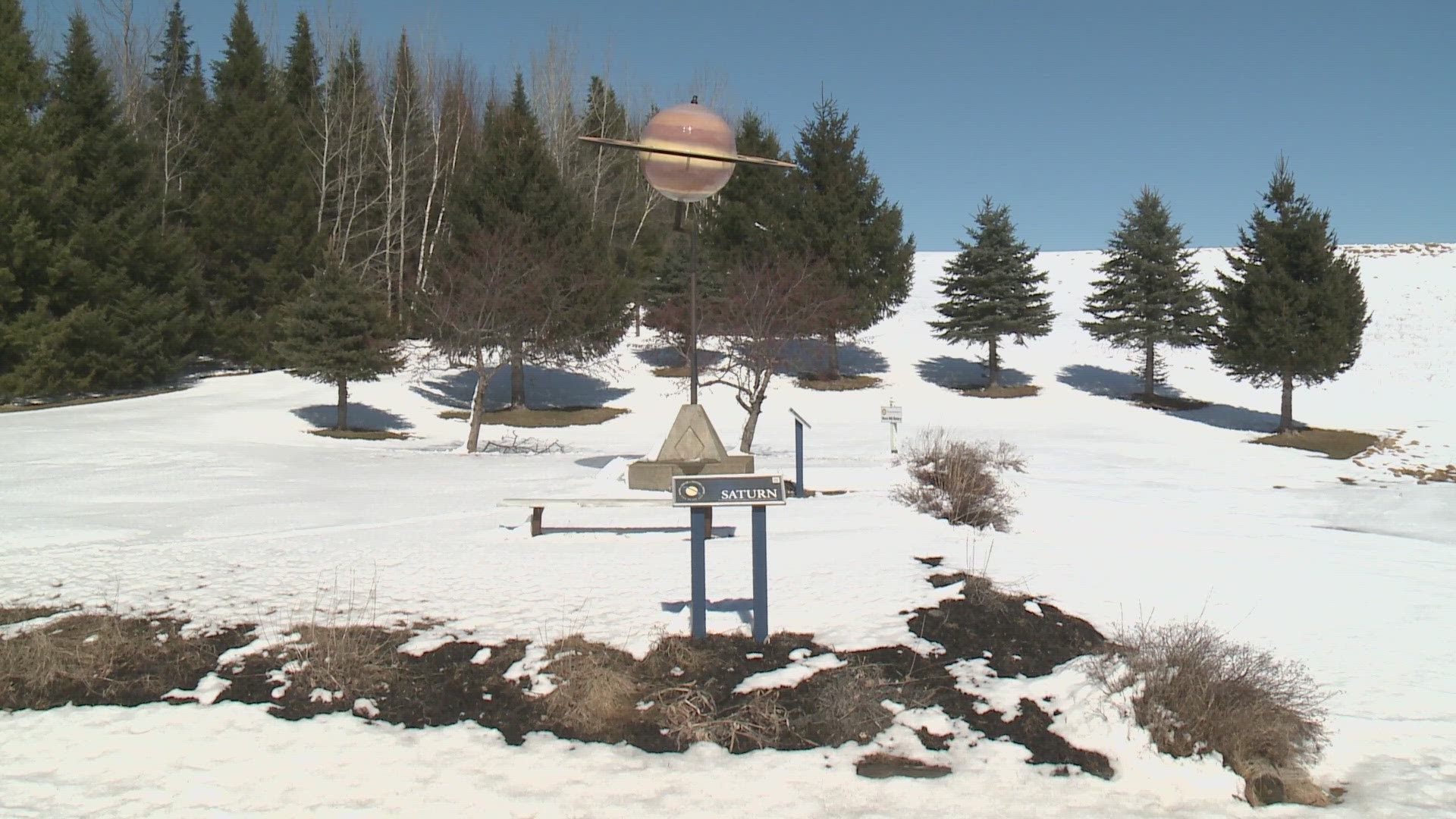PRESQUE ISLE, Maine — It may not be quite the center of the universe, but Presque Isle is home to Earth, Mercury, Venus, and even Mars.
They are all part of the Maine Solar System Model, a representation of the solar system that stretches 40 miles from the University of Maine in Presque Isle to Houlton.
The 20-year-old model was inspired by UMPI professor Kevin McCartney, who wanted to teach and demonstrate the size and distances involved in the real solar system.
The inspiration came as he was getting off Interstate 95 in Houlton.
“On a whim, I set my odometer as I got off the interstate, coming up north, and found it was 40 miles from the interstate up north to UMPI," McCartney said.
That distance, he said, was key to what came next. Because Professor McCartney—who insists on going by Kevin—figured the distance matched nicely with the size of the solar system.
It's based on what’s called an Astronomical Unit—the distance between the Earth and the sun. That’s 93 million miles, but by using those units, the size of the solar system can be scaled down.
“The distance from the sun to Pluto is 40 astronomical units, so this model is at the scale of one mile per astronomical unit," he said. "The Earth is a mile from here and at least the textbook distance to Pluto is 40 miles from here."
The now-retired professor of geology used those numbers to come up with a bold idea: to build a scaled model solar system, stretching those 40 miles from UMPI to Houlton.
And with the help of several hundred Aroostook County residents, that is precisely what happened.
Since its inception, the Maine Solar System Model has attracted tourists and inspired local people.
“It took four years to build this, “ McCartney explained. “A year of planning, a year to get the small planets in, a year to get Uranus and Neptune in, a year to get Saturn and Jupiter in.”
The planets were all created by students and faculty at vocational education schools. Volunteers used their equipment to install the string of planets from Presque Isle to Houlton.
“And by the way, the Maine Solar System Model is the largest in this hemisphere,” boasted McCartney. “And built without money. All donations, all school groups doing construction, and the various components.”
The model is scaled for both distance and the relative size of the planets. Earth, for example, is one mile from the college campus and is 5.5 inches in diameter. More than four miles farther south is Jupiter, the largest planet and just over 5 feet in diameter. Several miles south of Jupiter is Saturn, the most spectacular of all, measuring 117 inches in diameter at the outside ring.
The huge model, McCartney said, is a point of pride for all those who worked on it, and for the larger Aroostook County community.
“It happens all the time, “ he explained. “I’m walking around, maybe crossing a parking lot, and someone says, 'Hi, Kevin!' And I’ll say, 'Yes, who are you? And they say, 'You’ve never met me before, but I know you. I helped paint Jupiter!'"
Jupiter and some of the other planets have been repainted, repaired, and reinstalled over the years. The solar system has attracted visitors from far beyond Maine—as it's the largest such model in the Western Hemisphere and the second-largest in the world.
Now, they are adding a better sun.
For years, the “sun” of the model has been represented by a yellow steel girder reaching up three floors in a classroom building, touching a wall where the scale-model diameter of the sun is painted in bright yellow on the walls of all three floors.
But on Monday, April 8, the day of the total eclipse, UMPI will dedicate a new, yellow steel sculpture representing the sun, right beside the sign welcoming people to the UMPI campus.
It will be a large and prominent center for the solar system, and another tribute, McCartney said, to the “can-do” attitude of people in Aroostook County.
“It was built by the community of northern Maine,” he explained. “It's something we have that nobody else has. Not in Maine, not of this size anywhere else in North America.”
The solar system—which is growing bigger since new dwarf planets have been discovered—is a point of pride around this part of Maine, and they hope the model will provide one more memory for eclipse watchers to take home when they leave.

